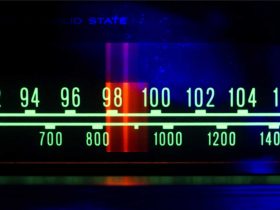I love interesting science stories, and one from last month blew me away. MIT researchers are using artificial intelligence to understand the speech – the “songs” — of sperm whales. They are decoding the “sperm whale phonetic alphabet” to reveal “sophisticated structures … akin to human phonetics.” The whales “systematically modulate certain aspects of their codas [short bursts of clicks] based on the conversational context, such as smoothly varying the duration of the calls – rubato – or adding ornamental clicks. Perhaps even more remarkable, they found that the basic building blocks of these codas could be combined in a combinatorial fashion, allowing the whales to construct a vast repertoire of distinct vocalizations.” The researchers note their findings challenge “the prevailing belief among many linguists that complex communication is unique to humans.” Their research “parallels the hypothetical scenario of contacting alien species.” Here is the news release and here is the detailed article published in Science magazine last month.
Here’s an interesting article on the history of whale songs from BBC Earth. They were discovered in the 1950’s by U.S. Navy engineers in Bermuda trying to listen for Soviet subs. They kept it a secret for 15 years, until recordings were given to biologist Roger Payne. In 1971 he published his “Songs of Humpback Whales” article in Science magazine. His work catalyzed the “Save the Whales” movement, and in 1972 the United Nations approved a worldwide moratorium on whale hunting, just in time to save these precious creatures from extinction.
Sound travels four times faster in water than air, and, at around 1200 meters below sea level, the low-frequency whale songs can travel thousands of miles. Researchers off Virginia can hear whales off the coast of Ireland. Blue whale songs are the loudest of any creature; they can reach 180 decibels, equivalent to the roar of a jet engine.
So here’s my question. How did whales get this ability to communicate? How did they get the incredible systems to make and receive these sounds, and the intelligence to use those systems to communicate? Secular scientists just say “it evolved.” My response remains, quoting the immortal John McEnroe, “you cannot be serious!” The design of the systems needed to make and receive these sounds is beyond fantastic.
I’ve hit upon this theme before, most recently in a blog post this past March entitled “How Stupid Do They Think We Are?”
Earlier this week it was announced that wild elephants may have names that others use to call them.
Perhaps the title of this post sounds familiar. It’s the name of a song in the 1967 movie Doctor. Doolittle. It was sung by Rex Harrison (I loved him in My Fair Lady) and won an Oscar. Here’s some of the lyrics:
If I could talk to the animals, just imagine it
Chatting to a chimp in Chimpanzee
Imagine talking to a tiger, chatting to a cheetah
What a neat achievement that would be!
If we could talk to the animals, learn their languages
Maybe take an animal degree
I’d study Elephant and Eagle, Buffalo and Beagle
Alligator, Guinea Pig, and Flea
I would converse in Polar Bear and Python
And I would curse in fluent Kangaroo
If people ask me, “Can you speak Rhinoceros?”
I’d say, “Of course-ros
Can’t you?”
Be well. And please spread the good news that modern science confirms, far beyond any reasonable doubt, the existence of a Creator. Friends don’t let friends sink into the hopelessness of a meaningless universe. There is hope for all of us.
God Bless,
Doug Ell
PS – If you happen to live in Vero Beach Florida you can now buy my new novel – Rise Above – at the Vero Beach Bookstore. And tell Chad he needs to order more copies. For those of you who don’t live in Vero Beach, it’s available on Amazon.


















Leave a Reply